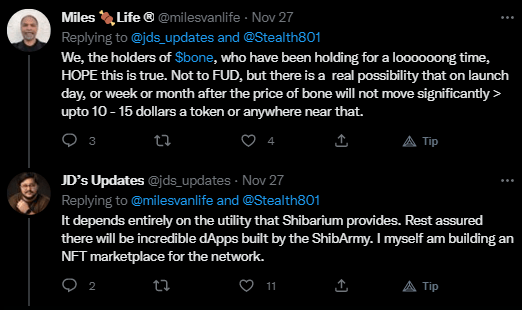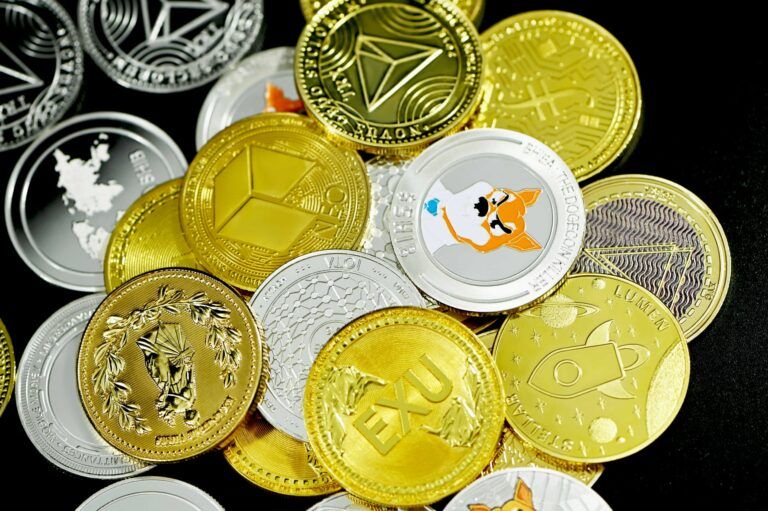Shiba Inu, one of the largest altcoin projects in the cryptocurrency market with a loyal community of $SHIB holders backing it, has been rolling out multiple developments since it was first launched; from non-fungible token (NFT) collections to decentralised exchanges like ShibaSwap, the SHIB army has been patiently waiting for the release of Shibarium.
Shibarium is an upcoming layer-2 solution that aims to improve the Shiba Inu ecosystem by providing faster transactions at a lower cost, among other important improvements. There are still a lot of questions surrounding the release and utility of Shibarium, however.
Why Shibarium?
The current Shiba Inu token is running on the Ethereum network which, despite being a highly safe and decentralised blockchain, its main drawbacks are scalability issues and low throughput.
While Ethereum has moved from Proof-of-Work (PoW) to Proof-of-Stake (PoS) via the Merge, this doesn’t mean scalability and low throughput issues are solved; the main idea behind the transition was to introduce new token issuance mechanisms, a better data processing system, and new tokenomics that will benefit the chain long-term. Therefore, layer-2s and sidechains are still an important part of the Ethereum ecosystem.
Before we dive in, let’s have a quick refresher on what are layer-2s and scaling solutions, since they are useful to understand why the Shiba community is building Shibarium.
What is a Layer-2?
A layer-2 refers to a secondary chain built on top of a main chain. When we talk about a blockchain as such, we’re technically referring to a layer-1, which can also be called main chain, base layer, layer-1, and so on. Therefore, a layer-2 is a chain that works together with the main chain.
Layer-2s are what’s called scaling solutions, a technology that can enhance a blockchain in multiple ways but they all share the main goal of alleviating network congestion on the main layer. There are different types of scaling solutions, mainly:
- Sidechains: independent blockchains that are compatible with another main blockchain. One famous example is Polygon, a sidechain that’s Ethereum Virtual Machine (EVM)-compatible. While it’s autonomous, it allows developers and users to port their projects from Ethereum to Polygon and vice-versa.
- State channel: peer-to-peer protocols that allow two parties to transact off the Ethereum network and post the final results to the blockchain.
- Layer-2: a scaling solution that takes transactions off the network to execute them in the layer-2s chain, then sends the transaction data back to the main blockchain in the form of batches. Two popular examples of layer-2s are optimistic and Zero-Knowledge rollups.
In this case, Shibarium will be a layer-2 chain that will use the Proof-of-Stake consensus algorithm. This means that it will be users that stake a portion of their tokens in order to become a validator.
A validator will verify the state of the blockchain to process transactions, instead of miners using hardware that consume vast amounts of electricity. The global network of computers acting as validators will ensure the decentralisation of the blockchain.
How Will Shibarium Work?
Shibarium will work alongside Ethereum to process transactions on the Shibarium ecosystem. It will take a large cut of the transaction load the Shiba Inu ecosystem currently brings onto Ethereum to process it on the Shibarium chain.
Further, the layer-2 will remove tokens from circulating to reduce supply and help boost the price. This is known as a token burning mechanism, in which tokens are sent to wallets that can only receive tokens but not send, also called Dead Wallets.
The SHIBArmy has for long championed token burns as a way to reduce the meme-inspired cryptocurrency’s circulating supply and make circulating tokens more valuable as a result, if demand is maintained or moves up. In late 2021, the Shiba Inu community has already burned a total of 410 trillion tokens.
So far, it’s yet to be known what kind of layer-2 technology Shibarium will be based on, whether optimistic rollups or ZK rollups.
When Will Shibarium Launch?
There’s no official release date for Shibarium at the time of writing. As per the official blog post, developers have been working on the project since April 2022, but there have been no updates about its development. What’s been reported is that the project will enter the Testnet fase via a public beta to follow shortly after release.
In other words, there’s a lot of work going on in the background, but nothing official yet. The Testnet will allow developers to build and test the tools required for end-user interactions, such as token transfer bridges, wallets, block explorers, and more.
History of Shibarium
Shibarium was first proposed by the creator of Shiba Inu, anonymous developer Ryoshi. However, on the now-deleted blog post, Ryoshi wasn’t sure about whether it was its own blockchain or an L2 —but the line that separates the two is rather thin: “The line between an L2 and own blockchain is thin, I mean what is the difference really between Matic L2 [Polygon] and BSC [BSC has since rebranded to BNB Chain]”
However, it seems Shibarium will remain its own layer-2, according to a blog post from the developers. That means there will be no SHIB 2.0, since it will remain connected to Ethereum. The layer-2 will require users to use $BONE to transact on it. This, theoretically, will mean more demand for BONE, which is the governance token of the decentralised exchange ShibaSwap.
Shibarium as a concept has been around since early 2021. What we can find on Twitter is the Shiba community talking about Shibarium being almost complete. But the long waiting has made BONE holders uneasy.

Shytoshi Kusama is the current Shiba Project Lead. According to Kusama, Shibarium will offer lightning-fast transaction throughput, low fees and more benefits to everything building on it.
FAQ
What’s the purpose of Shibarium?
Besides improving transaction speed and scalability, it serves as the foundation of new decentralised applications of all kind building on the new layer-2, including DEXs, NFT marketplaces, and others.
When will Shibarium launch?
No official date as of now. Not only SHIB soldiers are eager to hear something from the official developers, but investors as well.
What tokens will Shibarium use?
Shibarium will feature a multi-token system composed of $BONE and $LEASH. The first will be the chain’s utility token and the latter will work as a liquidity token for users to stake them in liquidity pools to earn rewards.
Image Source
Featured image via Unsplash.









